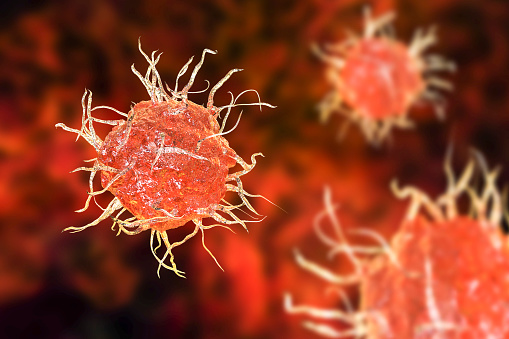
From monocyte till dendritic cell
Abstract
Two methods to generate human dendritic cells from hematopoietic precursor cells in peripheral blood have recently been published. One approach utilizes the rare CD34+ precursors and GM-CSF plus TNF-α. The other method makes use of the more abundant CD34− precursor population and GM-CSF plus IL-4. Here we report a method that is based on the latter approach. However, the GM-CSF and IL-4 treated cells are not stable mature dendritic cells, e.g., the characteristic morphology and nonadherence of dendritic cells is lost if the cytokines are removed. We describe the need for a monocyte-conditioned medium to generate fully mature and stable dendritic cells. This is achieved by adding a 3 day ‘maturation culture’ to the initial 6–7 day culture in the presence of GM-CSF and IL-4. Macrophage-conditioned medium contains the critical maturation factors. Mature dendritic cells are defined by their pronounced display of motile cytoplasmic processes (‘veils’), their high capacity to induce proliferative responses in resting T cells, particularly in naive umbilical cord T cells, their down-regulated antigen processing ability, and their characteristic phenotype: expression of CD83, high levels of MHC molecules and CD86, lack of CD115 and perinuclear dot-like CD68 staining. These features are stable for at least 3 days upon withdrawal of cytokines and conditioned media. IL-4 can be replaced by IL-13. When CD34+ progenitors are depleted from blood, there is only a minor reduction in the yield of dendritic cells by this method. We have adapted the method to consider several variables that are pertinent to clinical use, including a change from fetal calf serum to human plasma and to media approved for clinical use like X-VIVO or AIM-V. 1% plasma and RPMI 1640 are currently optimal. Additional reagents used for cell culture (Ig, cytokines) and cell separation (immunomagnetic beads) are approved for or already used in clinical applications. For 40 ml blood, the yield is 0.8–3.3 × 106 mature dendritic cells as defined by the expression of the new dendritic cell-restricted marker CD83. CD83+ cells constitute between 30 and 80% of all cells recovered at the end of the culture period. Yields can be enhanced up to six-fold if the blood donors are pretreated with G-CSF. Stable, mature dendritic cells generated by this method should be a powerful tool for active immunotherapy.
~ Source https://www.sciencedirect.com/science/article/pii/0022175996000786
Author links open overlay panel NikolausRomaniaDanielaReideraMarionHeuera1SusanneEbneraEckhartKämpgencBrigitteEiblbDietgerNiederwieserbGeroldSchulera2Show morehttps://doi.org/10.1016/0022-1759(96)00078-6
